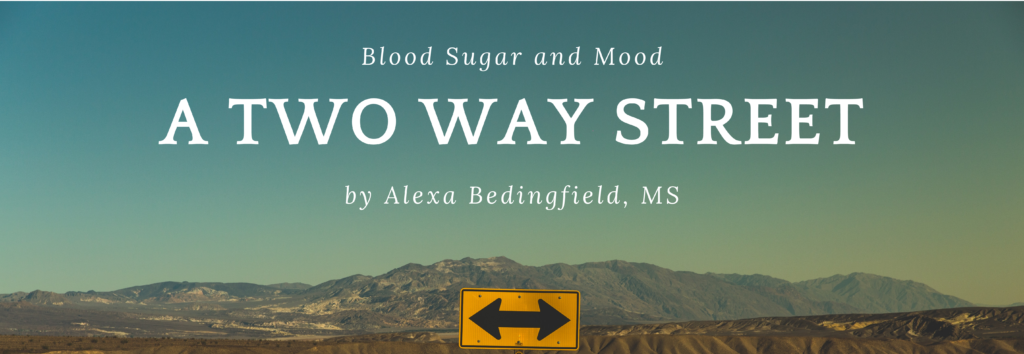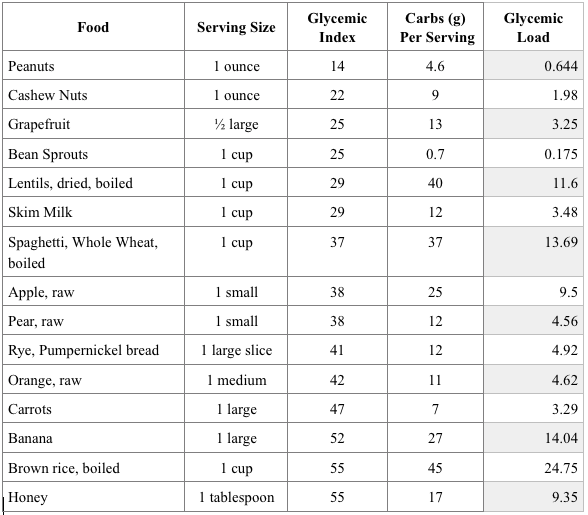
The interaction of our blood sugar levels and mental health is a complex, bi-directional relationship. Drastic blood sugar fluctuations can mimic certain mental health conditions. For example:
- Hyperglycemia related to excessive sugar consumption can cause feelings of panic and heart palpitations associated with anxiety disorders
- Fatigue and brain fog associated with very low blood sugar can mimic symptoms of depression
While blood sugar can affect our moods, our moods can also affect our blood sugar. Catecholamines and a number of other hormones released when we are stressed can contribute to hyperglycemia while acute trauma can be associated with hypoglycemic (low blood sugar) episodes.
For these reasons and many more, stabilizing blood sugar levels is of critical importance for those who want to optimize their mental health. The good news is that we have a great deal of control over our blood sugar levels via the food we ingest. In this article, you will learn some general terminology, along with strategies to help stabilize blood sugar levels.
Glycemic Index vs. Glycemic Load
The Glycemic Index (GI) is a rating system that is based on a scale of 0-100 which compares the glycemic response, a change in blood sugar following the ingestion of specific food or various foods.
A GI of 100 is given to pure sugar (glucose) on the GI scale. Low GI foods have a score of 55 or lower, medium GI foods have a score of 56-69, and high GI foods have a score of 70 or higher. Focusing on consuming foods that are lower on the Glycemic Index is a great first step to take in blood sugar management, however, there are several other important things to consider.
The Glycemic Load (GL) is another term to be aware of when it comes to blood sugar management. The GL of a food takes into consideration both the Glycemic Index of the food, along with the number of carbohydrates per serving of the food. For example, many fruits are high on the Glycemic Index (>55) but are considered only moderate or low in terms of their Glycemic Load due to the relatively low amount of carbohydrates per serving. A low GL is between 1 and 10, the medium is 11 to 19, and the high is above 20.
What are the shortcomings of GL/GI?
Both GL and GI measure the effect of food on blood sugar if consumed in isolation. We rarely eat single foods alone with no other foods, therefore both GI and GL don’t capture the full picture of how our bodies will respond when we eat food. There are many other factors that can influence the way our blood sugar reacts to the food we eat, including:
- Ripeness (fruits that are riper contain a higher amount of simple sugar and have a higher GI)
- The quantity of food eaten (a small serving of dark chocolate low in total sugars versus a whole candy bar will affect blood sugar levels differently)
- What else is consumed at the meal (consuming fruit, for example with a source of fat, like peanut butter, will decrease the Glycemic Index versus just eating an apple alone)
How Can You Use this Information to Help Manage Your Blood Sugar?
- Try to consume foods with a low to moderate Glycemic Load (<15) and low Glycemic Index (<55) most of the time
- If you are eating a higher GI/ GL food, be mindful of your serving size
- Eat plenty of vegetables. Try to make roughly half of your plate vegetables at each meal. The fiber present in vegetables will improve the overall Glycemic Index/ Load of your meal. The micronutrients present in vegetables (ex: Magnesium found in leafy greens) are essential co-factors in carbohydrate metabolism
- When eating a meal, always make sure you are getting a source of protein and dietary fat. This too will improve the overall GI/ GL of your meal
- If you have any questions about how you specifically can work on managing your blood sugar or mental health symptoms through your diet, you can schedule an appointment with me.
Low Glycemic Foods

Sources:
McGuire, M. & Beerman, K.A. (2013). Nutritional sciences: from fundamentals to food. 3rd ed. Belmont, CA: Wadsworth.
http://lpi.oregonstate.edu/infocenter/foods/grains/gigl.html
http://www.diabetes.ucsf.edu/sites/diabetes.ucsf.edu/files/PEDS%20Glycemic%20Index.pdf
